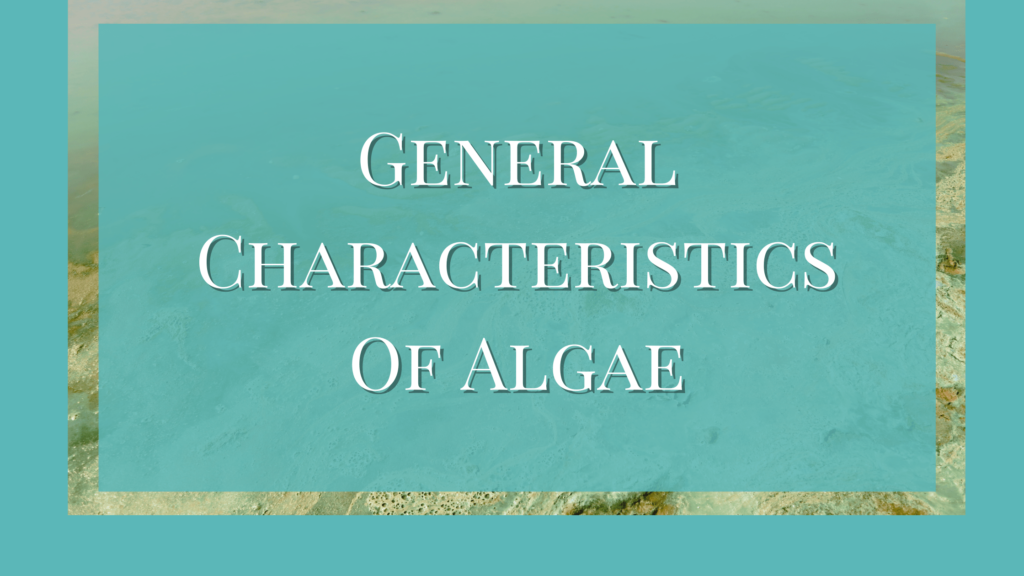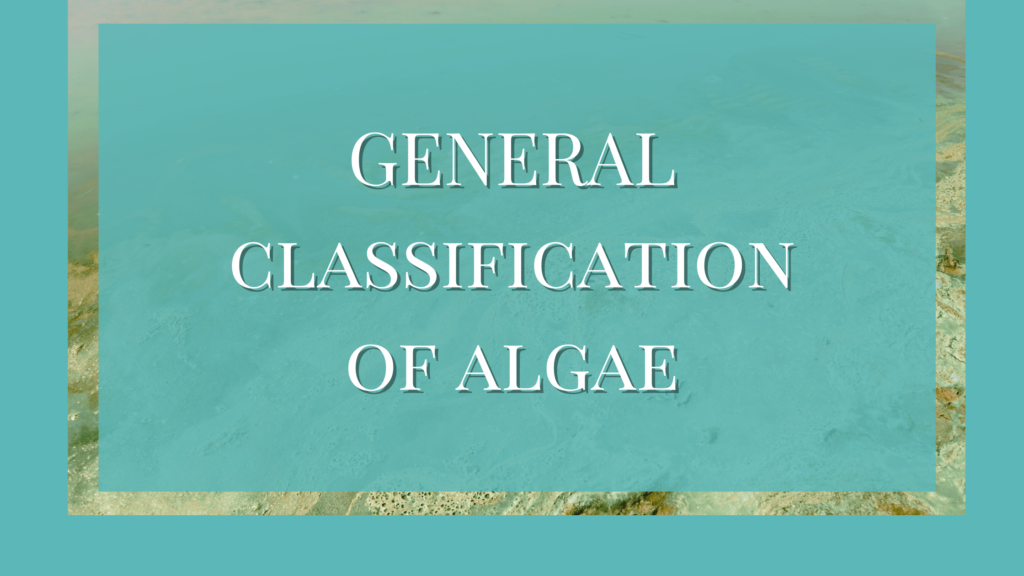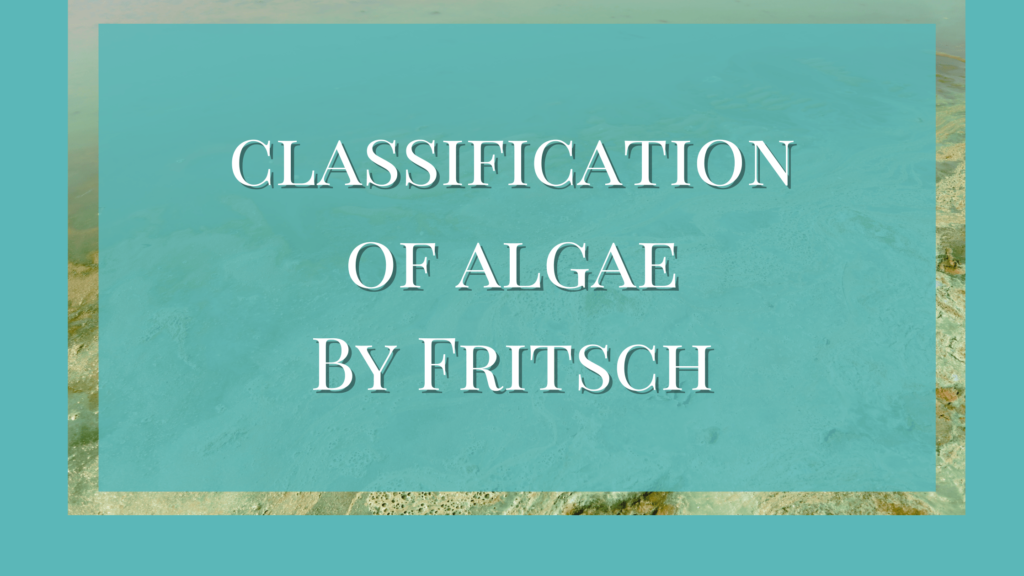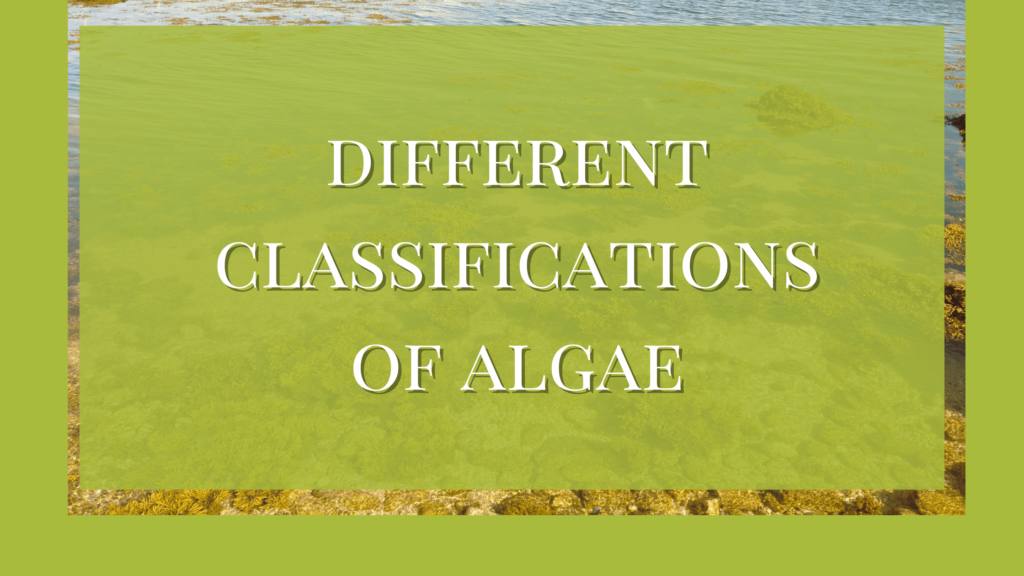Algae in Latin means seaweed and is a general term used for algae from all classes. The study of algae is known as Phycology or Algology. F. E. Fritsch and G.M Smith are a few of the famous psychologists who worked to develop a few different types of algae classification.
Some famous Indian Phycologists are H.D. Kumar, M.O.P. Iyengar, M.S.Randhawa, and R.N.Singh. Among all the algologists, F.E Fritsch is known as the Father of Phycology in the world and M.O.P Iyengar is the Father of Phycology in India.
Here we will see the important characteristics of algae.
General Characteristics Of Algae
- Algae has a thalloid body and according to Fritsch’s classification of algae, it is under Thallophyta because of this feature.
- The thallus does not show any distinction of true tissues and lacks vascular tissues, epidermis, stomata, etc.
- The sex organs of algae are mostly single-celled. Multicellular sex organs will have every cell fertile with no sterile cells.
- Algae do not form an embryo after gamete fusion. The zygote germinates to form the thallus.
- Haploid and diploid generations are independent of each other.
- Sporophytes are not dependent on gametophyte bodies.
- The gametophyte multiplies to form mitospores for asexual reproduction.
- Except for a few, all algae live in aquatic habitats.
- They are autotrophs, as they have chloroplast in their cells and can perform photosynthesis.

Distribution of Algae
Algae are mainly found in aquatic systems but they are also seen in terrestrial and unusual habitats. Based on the habitat of algae they are categorized as,
- Aquatic: The major population of algae is aquatic. They either live in freshwater or seawater. Based on these, aquatic algae are further divided into,
- Freshwater algae are found in ponds, rivers, lakes, streams, etc.
- Marine water algae are otherwise known as seaweeds. They are macroscopic with a distinctive thallus.
- Planktonic algae are the third type that floats uniformly or in patches and imparts a distinctive odor and color to the water. Euplanktonic algae are free-floating throughout their lives while tychoplankton are initially attached to a substratum and later become free-floating.
- Benthic algae are filamentous or colonial algae attached to the bottom of shallow water bodies.
- Neustonic algae usually grow at the water-air interface.
- Littoral algae grow at the junction between land and sea where the tides are more.
- Terrestrial: These algae are seen growing on soil or subterranean surfaces. They are further divided as per their substrate.
- Aerophytes: Algae that grows on moist walls, tree trunks, fences, flower pots, etc. They take water and carbon dioxide from the air.
- Cryptophytes grow on mountain peaks that are covered in snow. They grow in attractive colors.
- Thermophytes grow in hot springs that have high temperatures.
- Lithophytes grow on stones and rock surfaces.
- Algae growing in unusual habitats
- Epiphytes that grow on other plants, just for support.
- Halophytes inhabit highly salty water.
- Symbionts live in association with other organisms for mutual advantage. Eg, Lichens.
- Epizoic algae grow on the Molluscan shells, and fins of fishes and turtles.
- Endozoic algae grow inside other aquatic animals.
- Parasitic algae depend on other plants for shelter and food.
Thallus Organization
The thallus organization of algae ranges from unicellular microscopic to macroscopic highly branched algal structures. They are primarily categorized into unicellular and multicellular.
- Unicellular algae can be motile or non-motile. They may form colonies that are motile or non-motile. Coenobium is a form of a colony that has a distinct shape.
- Multicellular algae are mostly filamentous. Filamentous algae can be non-branched, simple-branched, and complex in structure. They can also be siphonaceous or parenchymatous.
Structural organization of algae
Based on the cell structure of algae, it is divided into prokaryotes and eukaryotes. The prokaryotic algae are distinctive only to the class Cyanophyceae.
Prokaryotic cell
- They have an incipient or primitive nucleus
- There are no nuclear membranes or histones
- DNA has fibrils.
- DNA is seen either concentrated in the middle or extended throughout the cell
- Chlorophyll is seen in lamellae or thylakoids.
- These structures are seen in the periphery of the cytoplasm and arranged parallelly.
- Their cell wall contains mucopeptide for strength. This component is exclusive to prokaryotic algae.
- Other cell organelles such as mitochondria, Golgi bodies, chloroplast, and endoplasmic reticulum are absent.
Eukaryotic cell
- Nucleus: Eukaryotic algae have a distinctive organized nucleus, nuclear membrane, and other membrane-bound cell organelles.
- Nucleolus: Algal cells may have a single or double nucleus each having a nucleolus thus forming a complex nuclear mass.
- Golgi bodies made of 2-20 stacked vesicles are present. They take part in cell metabolite synthesis.
- Mitochondria, the powerhouse of the cell, is present.
- Eyespot: The reproductive cells and motile vegetative cells of algae have a distinctive structure called eye spot, that helps them in movement in the water. They are of 5 types.
- Type A- Seen in chloroplast and not associated with the flagellum.
- Type B- Seen in chloroplast and associated with the flagellum
- Type C- Independent clusters of osmophilic granules
- Type D- Osmophilic granules with membranous lamella.
- Type E- a retinoid-pigmented cup with a lens.
- Vacuoles are present. They have a membrane cover called a tonoplast. They are of two types, simple vacuoles and complex vacuoles.
- Pyrenoids are additional organelles present on the surface of chloroplasts. They are the sites for scratch synthesis and accumulation.
- Flagella is another common feature of algae except for the members of Rhodophyceae and Cyanophyceae. Flagella are of different types such as,
- Whiplash or acronematic with a smooth surface
- Tinsel or pleuronematic with hair-like appendages.
- Reserve food material in algae is cyanophycean starch, floridean starch, mannitol, and laminarin starch
- Pigments: Algal pigments are responsible for the color of the algal thallus. They are chlorophyll, carotenoids, and phycobilins. Carotenoids are further divided into carotenes and xanthophyll.
Reproduction in Algae
The life cycle of algae involves three types of reproduction- vegetative, asexual, and sexual reproduction. Of these, sexual reproduction involves the fusion of male and female gametes.
- Vegetative reproduction: Vegetative reproduction in algae means the detachment of the filamentous algal body from its parent and growing into an individual. It occurs as cell division, fragmentation, budding, hormogonia, tubers, amylum star, protonema, and adventitious branches.
- Asexual reproduction: Asexual reproduction in algae occurs through the production of spores such as zoospores, aplanospores, hypnospores, tetraspores, autospores, akinetes, carpospores, exospores, and endospores.
- Sexual reproduction in algae happens during unfavorable conditions and it leads to the creation of new gene combinations in the offspring. There are two types of sexual reproduction in algae – isogamy and heterogamy. The former is the fusion of gametes that are morphologically different while the latter is the union of gametes that are morphologically and physiologically different.
The three stages of sexual reproduction are plasmogamy- the fusion of cytoplasm, karyogamy- the fusion of nuclei, and finally meiosis of the zygote to produce haploid offspring. So an alga passes through different phases such as the haploid phase and diploid phase, in its life cycle.
Life Cycle of Algae
The life cycle of algae shows a distinction between haploid and diploid generations.
Most algae are haploid in nature, a phase known as gametophytic. They will then undergo diploid generation during the sporophytic phase. Thus each type of algae has a particular dominant phase. To achieve this phase they will be passing through such haploid and diploid phases, sometimes twice in their life cycle.
Depending upon such alternation of generations, the life cycles of algae are classified into different groups.
- The haplontic type has the dominant gametophytic (n) generation.
- The diplontic type has a dominant sporophytic (2n) generation
- The diplohaplontic type has two vegetative generations alternating with a diploid one in the zygote.
- The triphasic life cycle has two distinct vegetative generations and the diploid generation is shown only by the zygote.
In addition to these life cycles, there also are different life cycles based on the site of meiosis. They are,
- Zygotic meiosis life cycle
- Sporic meiosis life cycle
- Somatic meiosis life cycle
- Gametic meiosis life cycle




